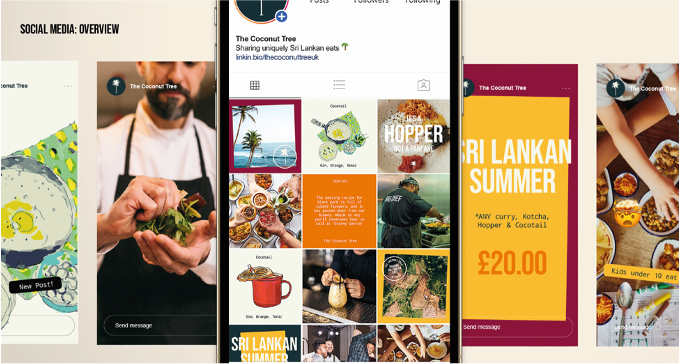FX Magazine feature The Bristol Loaf
FX Magazine featured The Bristol Loaf
In the 321st edition of FX Magazine, we were delighted to see our project with The Bristol Loaf used as the lead project in a special section on bars and restaurants.
This was followed by an interview with Chris Gwyther, who explains why adaptability and collaboration are key components of our studio’s work.
Read Chris’ interview below.
What is Phoenix Wharf, and what is your role within it?
Phoenix Wharf is a Bristol-based design agency specialising in interiors and branding for hospitality and retail. Our studio is an amalgamation of hospitality, retail, brand and exhibition design specialists – a breadth of expertise that gives us a competitive edge, enabling us to adapt design efficiencies from each industry. I am founder and creative director, and I oversee both the studio and all creative output.
We have a wide range of clients, from start-ups to established heritage brands. While we work with national brands and institutions such as SpaceNK or the National Trust, we also love to work with south-west businesses, or to take a local business to a national stage, as with our award-winning London cafe and workspace for Somerset dairy brand Yeo Valley.
How does the collaborative process with the client work on a project like the Bristol Loaf? How does the scope of your involvement vary from one project to another?
We see our job as interpreting and translating our client’s vision. Sometimes that vision needs questioning and refinement, and sometimes clients come to us with total clarity from the outset, as was the case with the Bristol Loaf.
We always start by meeting clients on-site and getting a real understanding of a space, the client and end-user needs. We then go through a series of spatial and sketch explorations to stress-test the brief and throw new ideas into the mix. Once we have an overarching concept, we undertake an iterative design process, engaging with clients little and often to make sure the final project is visually beautiful and commercially and operationally viable.
Our approach can be as varied as our clients. From a 3D perspective, this could be spatial exploration, 3D modelling and visualisation or detail design drawings. While on the brand side, this could include discovery workshops, brand identity creation or brand evolution and guidelines.
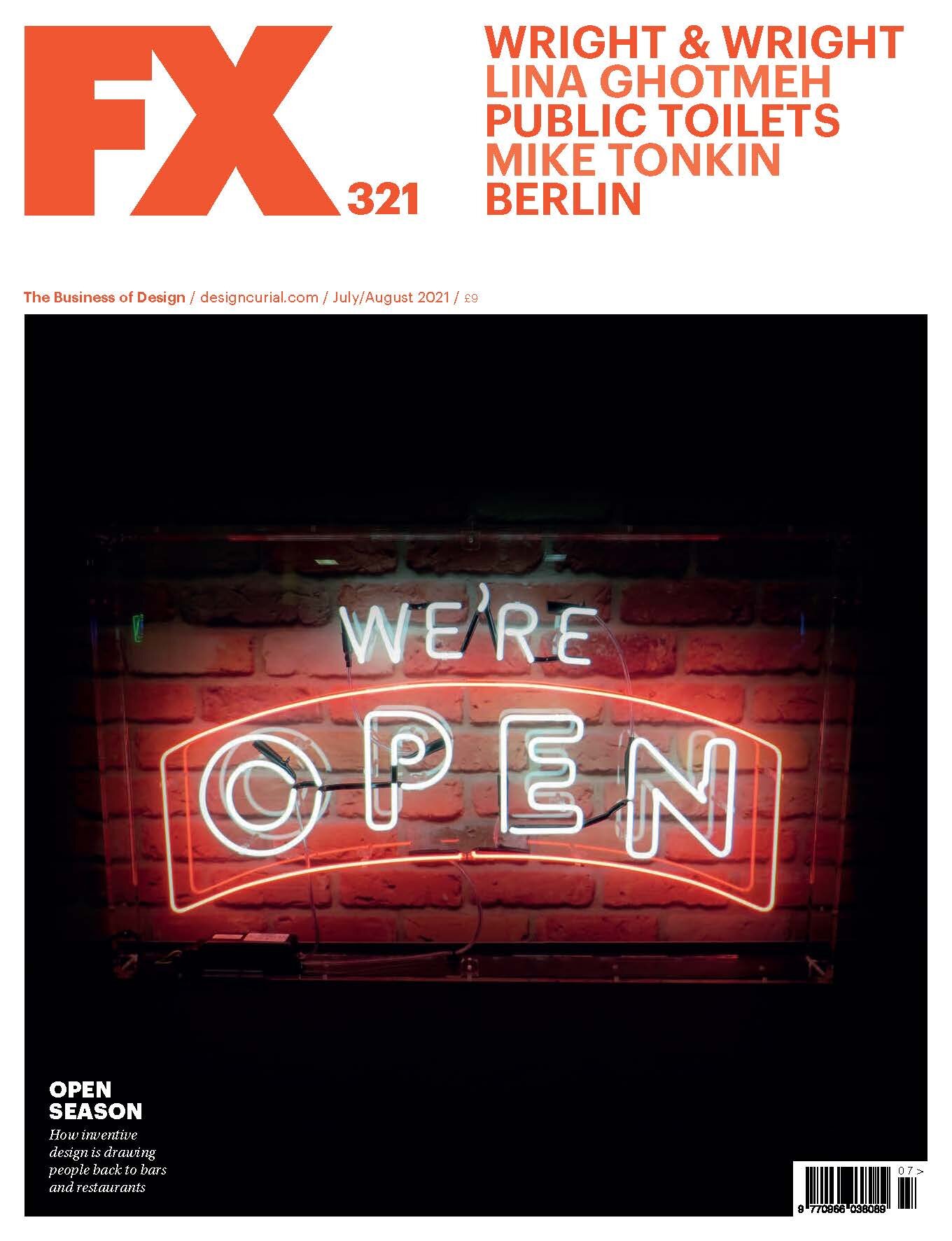
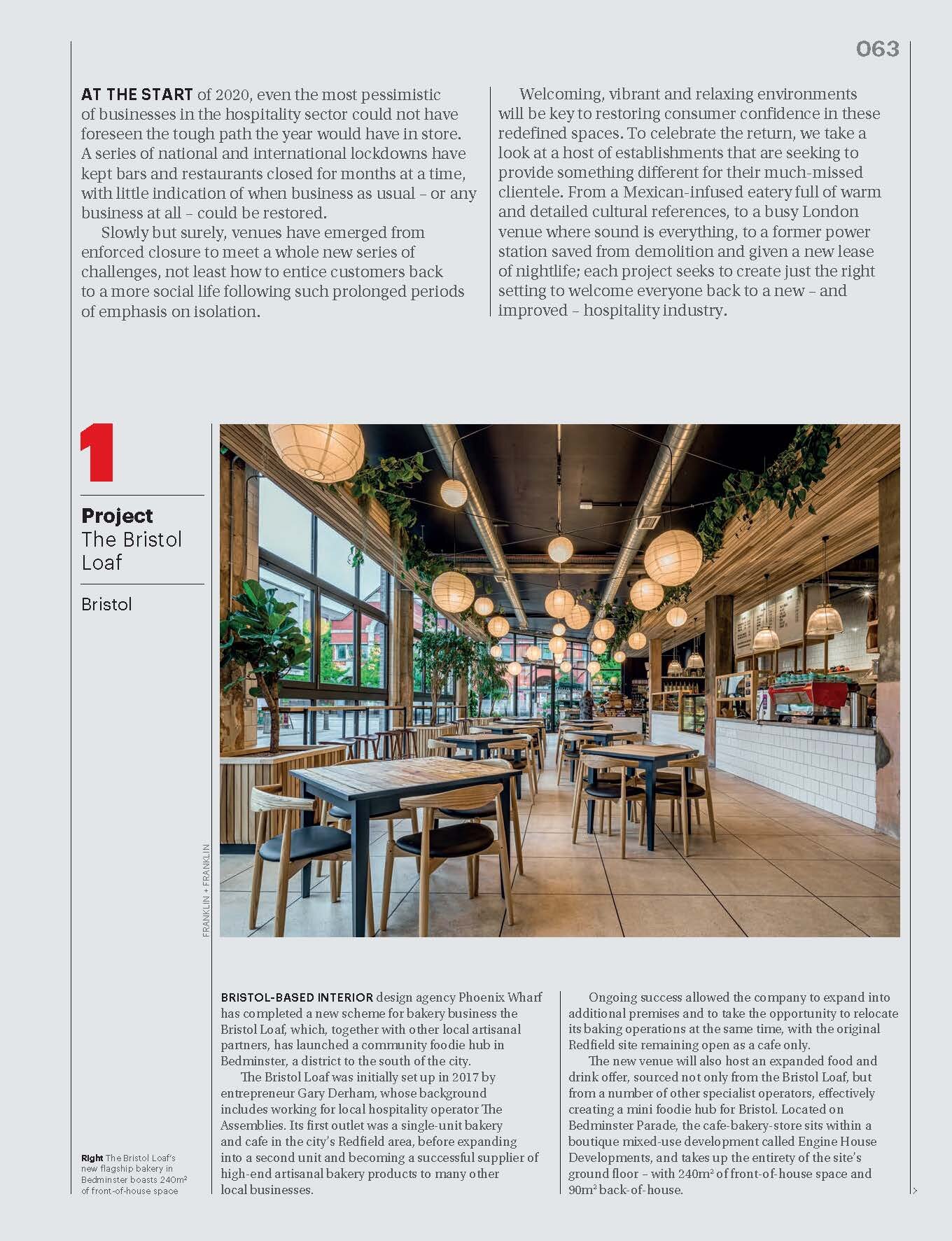
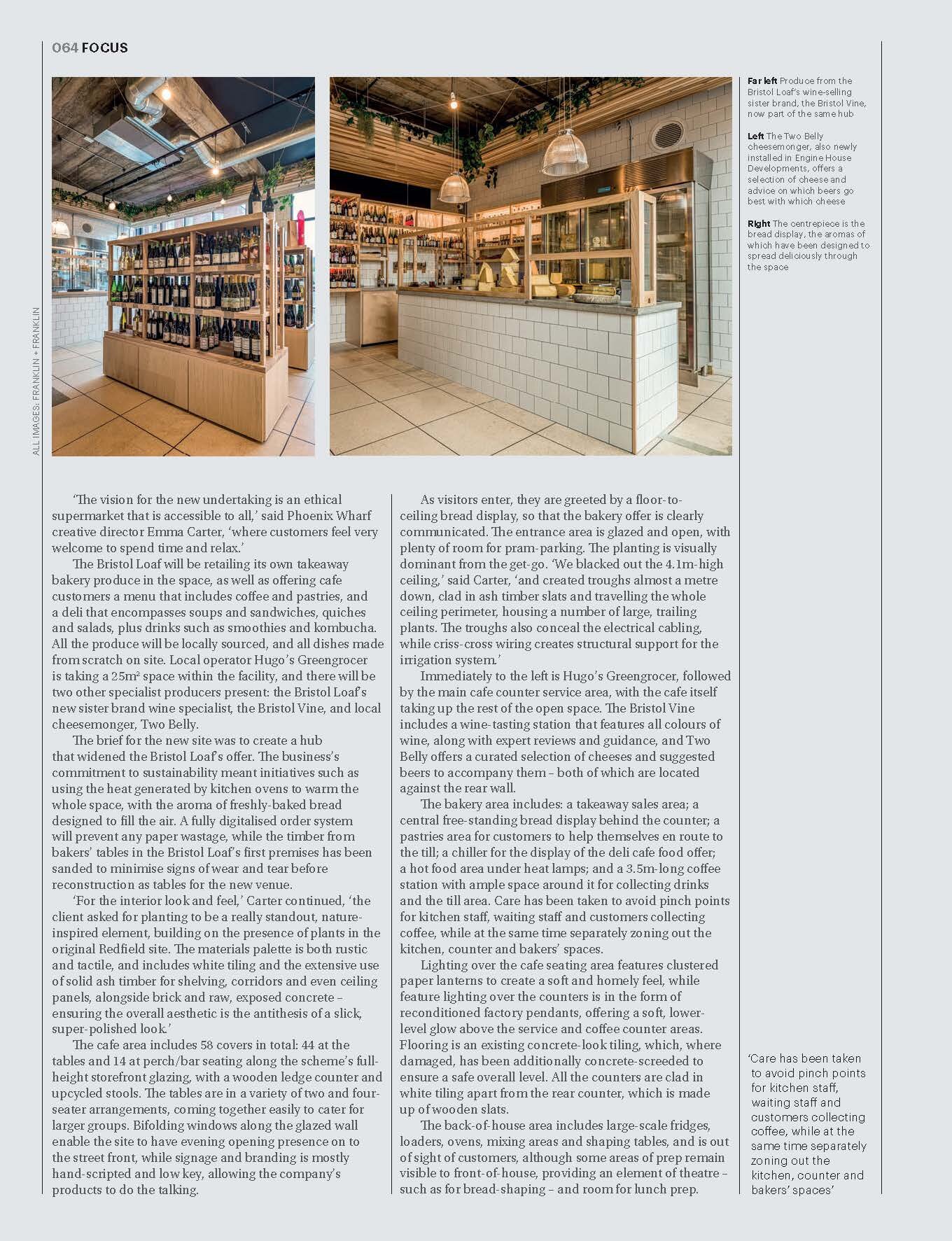
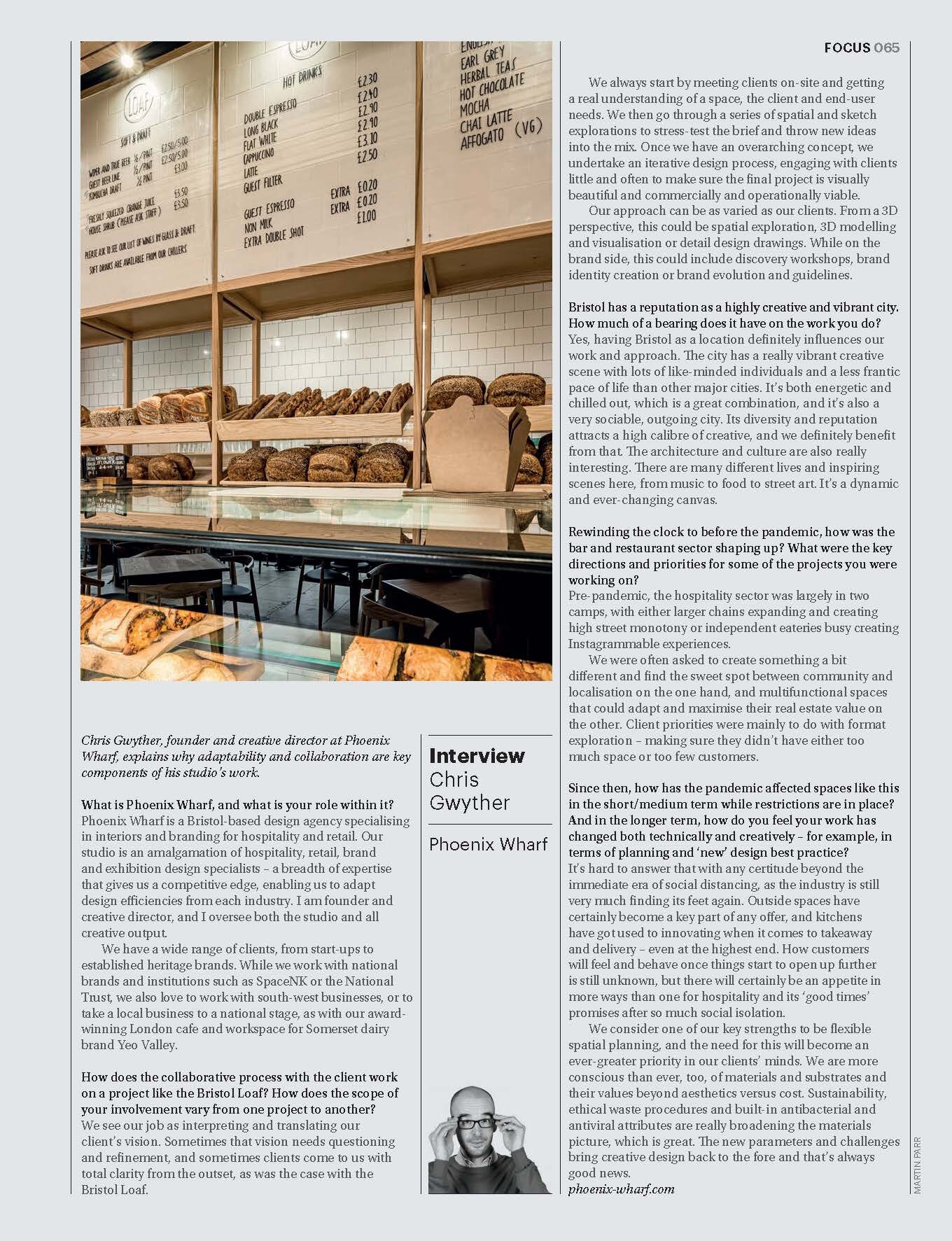
Bristol has a reputation as a highly creative and vibrant city. How much of a bearing does it have on the work you do?
Yes, having Bristol as a location definitely influences our work and approach. The city has a really vibrant creative scene with lots of like-minded individuals and a less frantic pace of life than other major cities. It’s both energetic and chilled out, which is a great combination, and it’s also a very sociable, outgoing city. Its diversity and reputation attracts a high calibre of creative, and we definitely benefit from that. The architecture and culture are also really interesting. There are many different lives and inspiring scenes here, from music to food to street art. It’s a dynamic and ever-changing canvas.
Rewinding the clock to before the pandemic, how was the bar and restaurant sector shaping up? What were the key directions and priorities for some of the projects you were working on?
Pre-pandemic, the hospitality sector was largely in two camps, with either larger chains expanding and creating high street monotony or independent eateries busy creating Instagrammable experiences.
We were often asked to create something a bit different and find the sweet spot between community and localisation on the one hand, and multifunctional spaces that could adapt and maximise their real estate value on the other. Client priorities were mainly to do with format exploration – making sure they didn’t have either too much space or too few customers.
Since then, how has the pandemic affected spaces like this in the short/medium term while restrictions are in place? And in the longer term, how do you feel your work has changed both technically and creatively – for example, in terms of planning and ‘new’ design best practice?
It’s hard to answer that with any certitude beyond the immediate era of social distancing, as the industry is still very much finding its feet again. Outside spaces have certainly become a key part of any offer, and kitchens have got used to innovating when it comes to takeaway and delivery – even at the highest end. How customers will feel and behave once things start to open up further is still unknown, but there will certainly be an appetite in more ways than one for hospitality and its ‘good times’ promises after so much social isolation.
We consider one of our key strengths to be flexible spatial planning, and the need for this will become an ever-greater priority in our clients’ minds. We are more conscious than ever, too, of materials and substrates and their values beyond aesthetics versus cost. Sustainability, ethical waste procedures and built-in antibacterial and antiviral attributes are really broadening the materials picture, which is great. The new parameters and challenges bring creative design back to the fore and that’s always good news.


